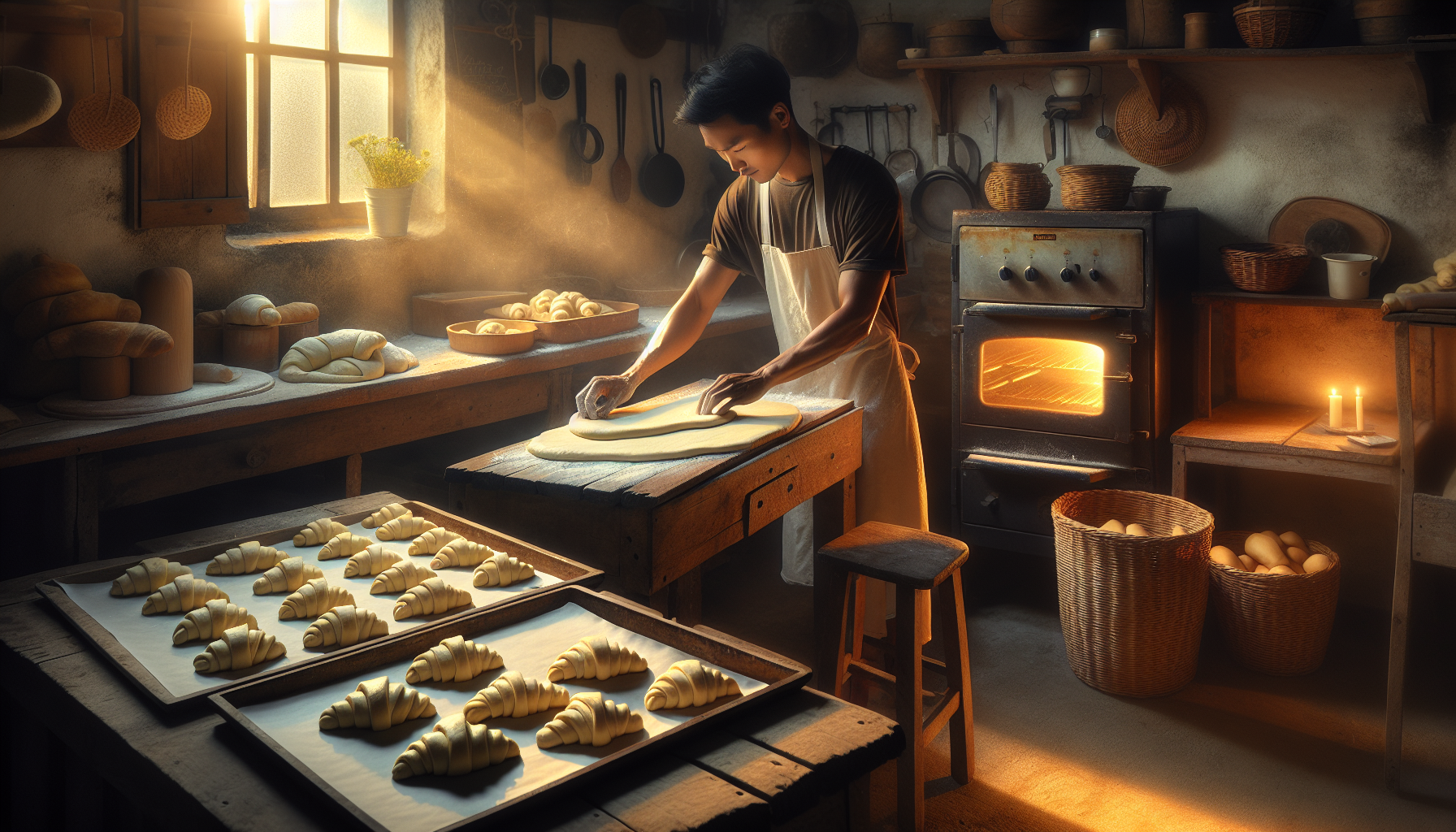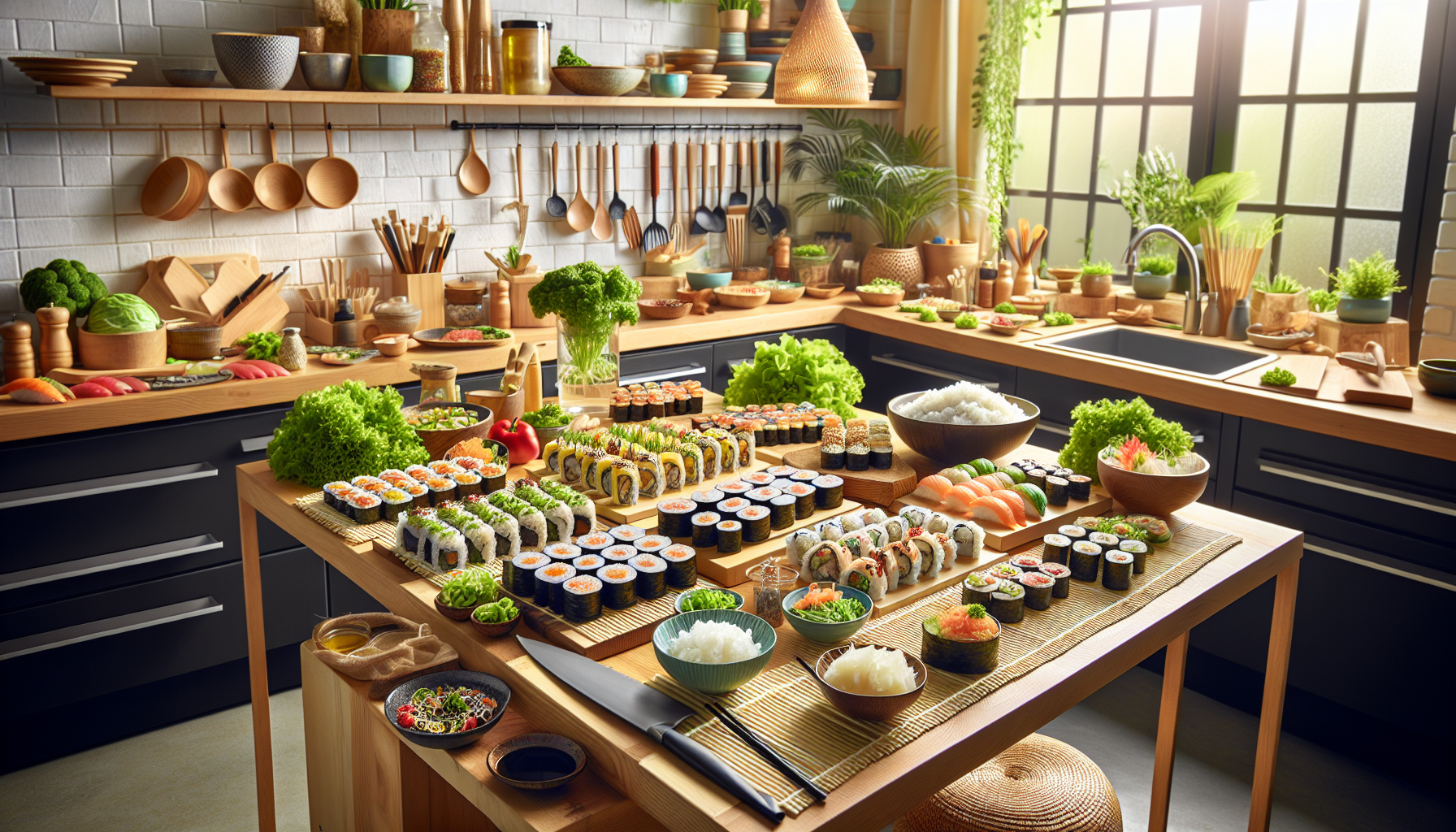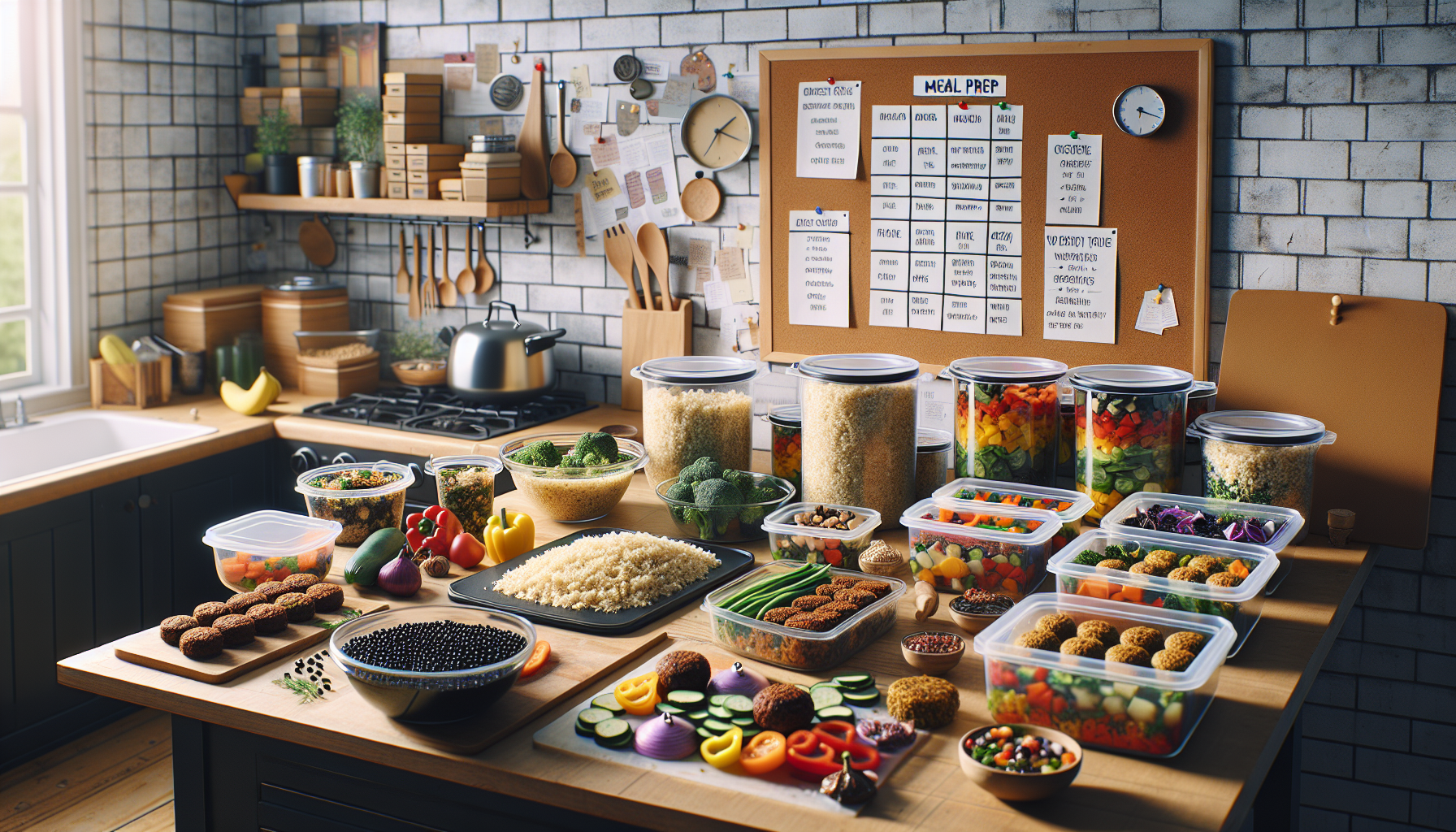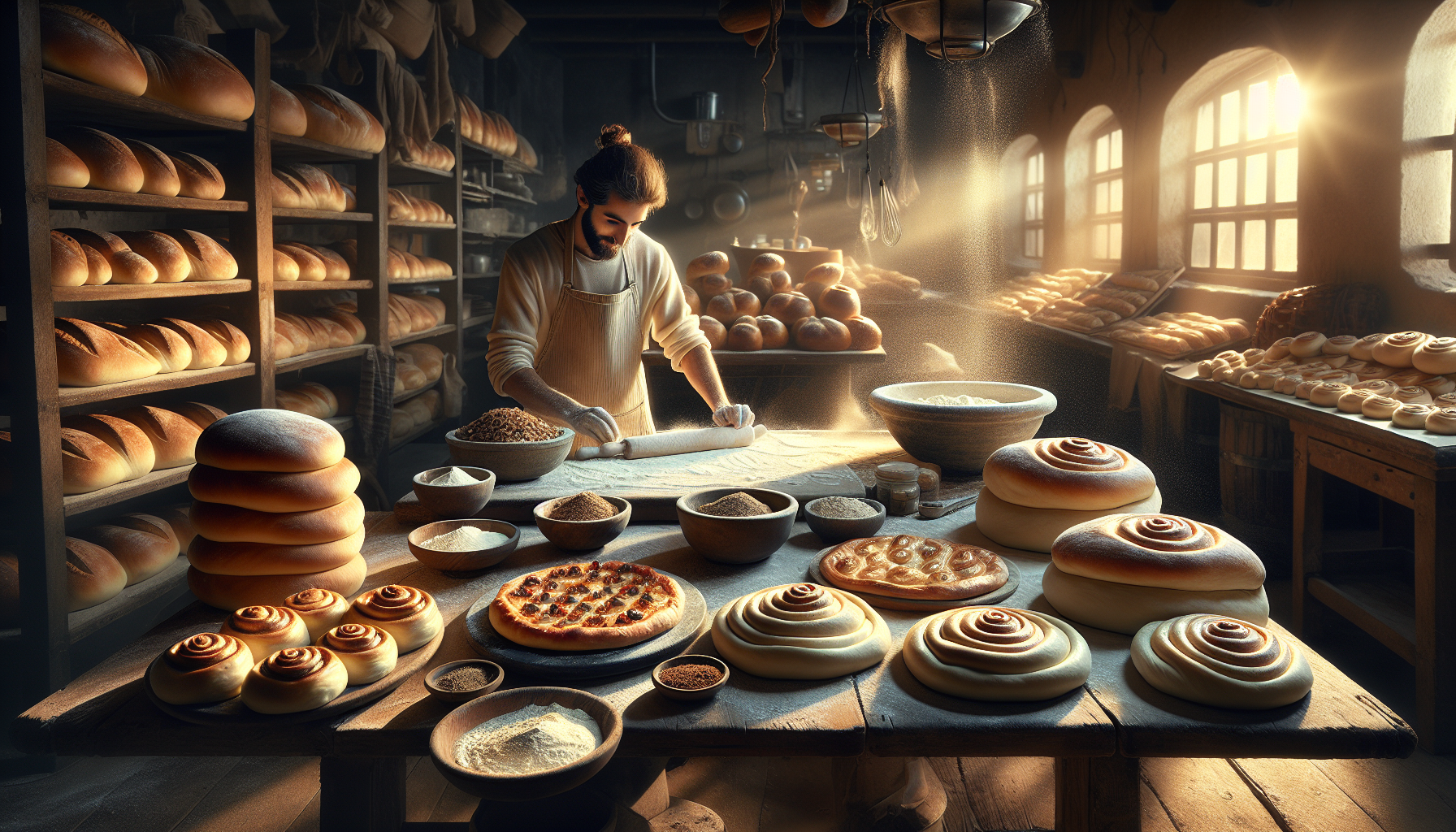Mastering the Art of Sautéing offers an explorative journey into one of the most fundamental cooking techniques in the culinary world. This course is crafted to guide enthusiastic cooks through the intricacies of sautéing, from selecting the right tools and ingredients to mastering advanced cooking methods. Along the way, learners will discover how to prepare their kitchen for success, explore the nuances of sautéing different types of foods, and unlock the secrets to creating rich, flavorful dishes. Whether you’re a seasoned chef or a curious beginner, this course promises to enhance your cooking repertoire with skills that will make every meal a delightful culinary adventure.
Lesson 1

Mastering the Basics of Sautéing
Embarking on a culinary journey often begins with mastering foundational cooking techniques, among which sautéing shines bright. Sautéing, a method that yields delightful textures and deep flavors, is a skill worth honing for chefs and home cooks alike. As we dive into the basics of this essential technique, keep in mind that the art of sautéing is more than just cooking; it’s about creating meals that resonate with warmth and satisfaction.
Understanding Sautéing
Sautéing involves cooking food quickly in a minimal amount of fat over relatively high heat. Unlike other methods that may stew or braise, sautéing keeps ingredients moving. This technique is perfect for tender vegetables and proteins, aiming to achieve a beautifully browned exterior without overcooking the interior. Remember, a successful sauté sings a song of balance and precision.
Selecting the Right Equipment
Key to sautéing is the pan you choose. Options vary from non-stick to stainless steel and even cast iron. Each has its benefits: non-stick pans are convenient, stainless steel pans offer unmatched durability, and cast iron pans provide even heat distribution. Consider what you’ll be sautéing most frequently to inform your choice.
The Importance of the Right Oil
Equally crucial is selecting the correct oil. Since sautéing occurs at high temperatures, opt for oils with a high smoke point. Choices such as vegetable oil, canola oil, or peanut oil are excellent for sautéing. They allow you to achieve that divine sear without the risk of burning.
Essential Tips for Sautéing Success
- Preheat your pan: A hot pan ensures immediate sizzle upon adding your ingredients, sealing in flavors.
- Keep it dry: Make sure your ingredients are dry to help achieve a crisp exterior.
- Don’t overcrowd the pan: Giving your ingredients space means they’ll sear rather than steam.
Culinary Creativity through Sautéing
The beauty of sautéing lies in its versatility and the invitation it offers for creative expression in the kitchen. Whether you’re crafting a simple vegetable side or building the base for a complex entrée, sautéing provides a canvas for culinary creativity. The more you practice, the more intuitive these choices become, guiding you to create dishes that delight and satisfy. Embrace the simplicity and elegance of sautéing, and watch as it transforms your cooking.
Summing Up the Sauté Sensation
Mastering the art of sautéing opens a world of culinary opportunities. With the right equipment, the best oils, and a handful of expert tips, you’re well on your way to achieving delightful dishes full of flavor and texture. Celebrate each step of the journey and let your culinary creativity shine. Happy sautéing!
Lesson 2

Preparing to Sauté: A Comprehensive Guide
Preparing to sauté is an art that combines skill, anticipation, and a touch of flair. At the heart of creating unforgettable dishes, mastering the preliminary steps of sautéing is crucial. This guide aims to equip you with essential knowledge ensuring your sautéing journey is both thrilling and fruitful. Let’s delve into the key aspects of gearing up for the perfect sauté experience.
Selecting Your Pan
The choice of pan is pivotal in sautéing. A pan that heats evenly and maintains temperature well will turn your ingredients into culinary masterpieces. While non-stick pans are great for beginners, opting for stainless steel or cast iron can elevate your cooking through better heat distribution and durability.
Choosing the Right Oil
Oils are not just cooking mediums; they’re flavor enhancers. High smoke point oils like avocado, grapeseed, and peanut oil are ideal for sautéing. They withstand high temperatures without burning, ensuring your food sautés to perfection without any bitter, burnt flavors.
Ingredient Preparation
Before the pan ever touches the stove, preparing your ingredients is essential. Ensure everything is properly washed, dried, and cut consistently. This not only contributes to even cooking but also brings a harmonious blend of textures and flavors to your dishes.
Preheating Your Pan
One of the keys to successful sautéing is starting with a hot pan. Preheat your pan over a medium to high heat before adding oil. You’ll know it’s ready when water droplets dance on the surface. This step ensures that foods sizzle upon contact, sealing in flavors and creating that sought-after crisp exterior.
Perfecting the Technique
Sautéing is active cooking. It’s about being engaged, adjusting temperatures, and moving the food. Whether you’re using a spoon, spatula, or the classic flip, keep your ingredients moving to ensure they cook evenly and develop rich, complex flavors.
Unleashing Your Culinary Creativity
With the right tools, techniques, and timings at your disposal, preparing to sauté becomes more than just cooking; it’s an expression of culinary art. Sautéing invites you to experiment, allowing ingredients to reveal their best flavors and textures. As you master these preparatory steps, your kitchen will transform into a canvas for culinary innovation. The journey from preparation to perfection in sautéing is filled with discovery, flavor, and the joy of cooking. Embark on this journey with confidence, knowing you’re equipped to create dishes that resonate with taste and tradition.
Lesson 3

Advanced Techniques in Sautéing
Delving into the world of sautéing, we uncover advanced techniques that elevate simple ingredients into gastronomic wonders. This lesson navigates through the complexities of sautéing different types of foods, enhancing dishes with flavors, and creating sumptuous sauces that tie everything together. Let’s embark on this culinary adventure, where creativity meets skill in the sauté pan.
Sautéing Across the Spectrum
While sautéing might seem straightforward, different ingredients demand unique approaches. For proteins like chicken or tofu, ensuring they’re dry and seasoned before they hit the pan can make all the difference. Meanwhile, vegetables benefit from a quick toss in oil with a pinch of salt, bringing out their natural sweetness as they sauté. The secret is to adjust your technique based on the ingredient, aiming for that perfect sear every time.
Flavor Infusions
Sautéing isn’t just about cooking – it’s an opportunity to layer flavors. As ingredients sauté, consider deglazing the pan with a splash of wine or stock. Not only does this release those delicious, caramelized bits stuck to the bottom, but it also introduces a new depth of flavor. Furthermore, incorporating fresh herbs or a squeeze of citrus can add brightness and contrast to the richness of sautéed dishes.
Creating Perfect Pan Sauces
The culmination of sautéing often lies in the sauce. Utilizing the fond – those flavorful browned bits left in the pan – as the base for your sauce can transform a dish. A simple combination of butter, flour, and broth can create a velvety sauce that complements your sautéed creations beautifully. Remember, a great pan sauce balances richness, acidity, and texture to enhance, not overshadow, the main ingredients.
Enhancing Your Sauté Skills
Mastering advanced sautéing techniques requires practice and a willingness to experiment. Each ingredient offers a chance to explore new flavors and textures. As you become more confident in your sautéing abilities, challenge yourself with complex dishes that showcase your newfound skills. Remember, the pan is your canvas, and with these advanced techniques, you’re equipped to create culinary masterpieces that astonish and delight.
Sautéing Beyond Basics
As we close this chapter on advanced sautéing techniques, it’s clear that this cooking method offers endless possibilities. From expertly browned proteins to vibrant, crunchy vegetables and rich, glossy sauces, sautéing is a dance of heat, timing, and flavor. Embrace these advanced techniques and let your culinary creativity flourish. In the world of sautéing, there’s always a new technique to master, a new flavor combination to discover, and a new dish to delight in.
Mastering the Art of Sautéing culminates in a comprehensive understanding of this pivotal cooking technique, enriching your culinary skills and broadening your flavor palette. Throughout this course, you’ve been equipped with the knowledge to select the proper equipment, prepare ingredients for optimal results, and apply advanced sautéing methods that turn simple dishes into sophisticated culinary creations. As you continue to explore and experiment within the realm of sautéing, remember that the journey to culinary mastery is an ongoing process of learning and discovery. To assess your newfound expertise, a 10 question quiz awaits below, designed to test your knowledge and ensure you’re ready to bring the art of sautéing into your own kitchen adventures.
Test Your Knowledge With this short Quiz
Click here to copy your score to share on facebook!







